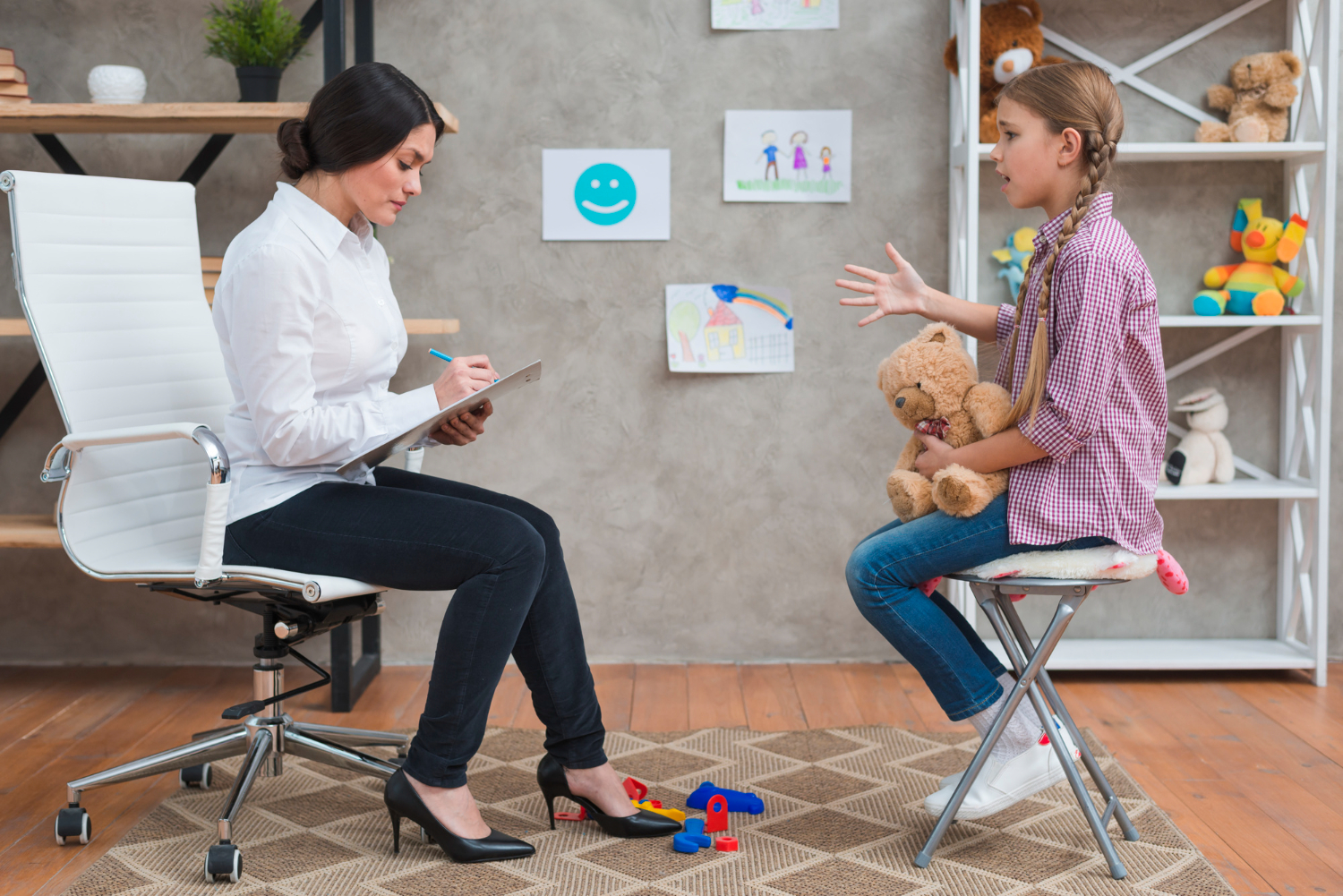
Social Cues and ABA Therapy
Unlocking Social Communication for Autism through ABA Therapy
Understanding Social Interactions
For individuals on the autism spectrum, social cues can often feel like an unsolvable puzzle. These non-verbal signals are vital for communication. Recognizing and interpreting them is especially important for developing meaningful relationships. Applied Behavior Analysis (ABA) therapy offers a structured approach to help individuals with autism improve their understanding of social cues, enhancing their overall ability to interact and communicate.
Interpreting Social Cues: Challenges and Solutions

What challenges do individuals with autism face with social cues and how does ABA address these challenges?
Individuals on the autism spectrum often face significant hurdles when it comes to recognizing and interpreting social cues. These may include:
- Difficulties with Eye Contact: Many find it hard to maintain eye contact, which can be perceived as disinterest.
- Interpreting Nonverbal Communication: Body language, facial expressions, and tone of voice can be confusing, leading to misunderstandings in social situations.
- Engaging in Conversations: Initiating and maintaining dialogues can seem daunting, often resulting in social isolation or anxiety.
This inability to effectively navigate social situations can lead to loneliness and increase the risk of bullying. Additionally, many individuals may experience mental health issues, which can worsen their overall social experience.
Applied Behavior Analysis (ABA) therapy offers solutions to these challenges by breaking down complex social behaviors into manageable steps. Here’s how ABA can help:
- Structured Support: By providing a clear framework for practicing social interactions, children learn to recognize and respond to various social cues.
- Specific Skill Teaching: Through techniques like modeling, role-playing, and social stories, children practice critical skills such as maintaining eye contact and interpreting nonverbal signals.
- Peer-Mediated Interventions: These involve interaction with typically developing peers, allowing for natural practice of social skills in real-world settings.
By employing these methods, ABA therapy significantly improves social communication and interaction abilities for individuals with autism, fostering stronger relationships and integrating them into social environments.
The Role of ABA Therapy in Social Skills Development

How does ABA therapy help with social skills?
ABA therapy, or Applied Behavior Analysis, plays a pivotal role in enhancing social skills among children with autism spectrum disorder (ASD). This therapy employs structured training programs that are individualized to address each child's specific challenges and strengths. It concentrates on critical elements of communication, both verbal and nonverbal, such as body language, tone of voice, and facial expressions.
Benefits of ABA Therapy for Social Skills
The benefits of ABA therapy in improving social skills are numerous:
- Improved communication: Children learn to express themselves clearly, enhancing their ability to engage in conversations.
- Increased confidence: Regular practice in a supportive environment leads to greater self-esteem.
- Reduced anxiety: Understanding social cues reduces overwhelm in social situations.
- Better relationships: Enhanced social skills support positive interactions with peers and adults.
By using techniques such as role-playing, structured games, and modeling appropriate behaviors, children can practice how to start conversations and interpret others' nonverbal signals. This systematic approach fosters the development of social competence, enabling children to interact successfully in various settings.
Techniques Used in ABA
Several key techniques in ABA therapy specifically target social skills development:
| Technique | Description | Purpose |
|---|---|---|
| Role-Playing | Practicing social scenarios in a controlled environment | Builds confidence and skills in interactions |
| Modeling | Demonstrating desired behaviors for children to imitate | Teaches appropriate social responses |
| Natural Environment Training (NET) | Practicing skills in real-life contexts for generalization | Ensures skills are applicable outside therapy |
| Social Stories | Narratives that outline social situations and expected behaviors | Prepares children for social interactions |
Through these methods, ABA therapy not only teaches children to recognize and respond to social cues but also motivates them to engage with others effectively, paving the way for meaningful relationships.
Effective Techniques in ABA for Communication Enhancement

What techniques are used in ABA to enhance social interaction and communication?
Applied Behavior Analysis (ABA) therapy employs a range of targeted techniques to bolster social interaction and communication skills among children with autism. Among the most effective are role-playing, social stories, and peer modeling. These methods not only facilitate understanding but also encourage practice in a safe environment.
Core Techniques
- Role-Playing: This method allows children to engage in simulated social interactions, helping them practice communication and appropriate responses.
- Social Stories: These narrative tools simplify complex social scenarios, guiding children through expected behaviors in various contexts. They help reduce anxiety associated with new or challenging situations by preparing kids for what to expect.
- Peer Modeling: Involves utilizing typically developing peers to demonstrate social skills, thereby offering natural opportunities for practice and reinforcing learning.
Additionally, Behavioral Skills Training (BST) includes explaining, modeling, practicing, and providing feedback on specific social skills. Programs often dissect complex skills into manageable parts, focusing on necessary areas like turn-taking and understanding social norms. Activities like 'Bug in a Rug,' 'Show and Tell,' and 'Lunch Conversation' further enhance communication and socialization.
By monitoring progress and employing positive reinforcement, ABA effectively equips children with the essential social skills needed to navigate social environments and build friendships.
Learning Social Cues: Strategies for Success

How can autistic individuals learn social cues?
Autistic individuals can learn social cues through a variety of targeted strategies that focus on enhancing their social skills. One effective approach is modeling social interactions, where therapists or peers demonstrate appropriate behaviors for imitation. This technique helps individuals understand how to express themselves appropriately in different situations.
Incorporating behavior-specific praise is crucial; it reinforces positive social interactions when they occur, encouraging repeated behaviors. Teaching context clues also aids in interpreting social situations, such as understanding nuances in tone of voice or body language that convey emotions.
Structured social groups, like lunch meetings with peers exhibiting strong social skills, provide low-pressure environments for autistic individuals to practice interactions. These settings foster natural communication opportunities away from formal therapy.
Another valuable tool is the use of social narratives and social cartooning, which clarify social rules and expectations. These narratives simplify complex social norms, making them easier to grasp.
Teaching empathy and perspective-taking further equips autistic individuals to navigate social interactions more effectively. By understanding others' emotions and viewpoints, they can respond appropriately, enhancing their ability to connect with peers.
Structuring Social Interactions: The Power of Positive Reinforcement
What is the role of positive reinforcement in ABA?
Positive reinforcement is a cornerstone of Applied Behavior Analysis (ABA) therapy. This approach focuses on encouraging desired behaviors, especially social skills, through the provision of rewards or incentives when these behaviors are successfully demonstrated. For children with autism spectrum disorder (ASD), this might involve using praise, tangible rewards, or fun activities to reinforce effective communication and interaction skills.
How does positive reinforcement benefit children with autism?
The benefits of positive reinforcement in ABA are multifaceted:
- Encourages desired behavior: Children are more likely to repeat behaviors that have been positively reinforced.
- Enhances motivation: Frequent rewards boost motivation, making social interactions feel rewarding rather than daunting.
- Builds self-confidence: As children experience success through reinforcement, their self-esteem rises, leading to enhanced social engagement.
Methodology of reinforcement in ABA therapy
Positive reinforcement in ABA therapy is implemented through a systematic approach:
- Assessment: Therapists identify specific social skill deficits, determining which behaviors require reinforcement.
- Targeted Teaching: Using structured methods like Modeling or Role-Playing, therapists teach these skills in controlled environments.
- Reward System: Upon demonstrating the desired behavior, children receive immediate reinforcement, fostering a connection between the action and its positive outcome.
These strategies ensure that socially significant behaviors, such as initiating conversations or recognizing non-verbal cues, are effectively taught and generalized across various contexts, enhancing overall communication capabilities.
What are socially significant behaviors in ABA?
Socially significant behaviors in Applied Behavior Analysis (ABA) are actions that can markedly enhance an individual's quality of life. These behaviors include essential skills such as social interactions, communication, daily living tasks, self-care, leisure activities, and vocational skills. ABA employs strategies grounded in reinforcement, focusing on positive behavior change rather than using harmful methods. By utilizing techniques like Discrete Trial Training and conducting Functional Behavior Assessments, ABA practitioners tailor interventions to meet individual needs, often in natural environments. The ultimate goal is to ensure that learned behaviors generalize across different contexts, resulting in meaningful and lasting improvements in the individual’s life.
Parent and Caregiver Involvement in ABA Therapy

Why is Family Involvement Important in ABA?
Incorporating family and caregiver involvement in Applied Behavior Analysis (ABA) therapy is crucial for the success of children with autism. Families can reinforce the skills learned during therapy sessions in everyday environments, leading to greater consistency and promoting successful generalization of social skills. Engaging family members helps create a supportive atmosphere, allowing children to practice skills in various settings like home and community.
What Practical Strategies Can Parents Use?
- Participate in Training Sessions: Parents can attend training sessions with ABA therapists to learn techniques that can be applied at home. This knowledge equips them to reinforce strategies consistently.
- Utilize Visual Supports: Visual aids like schedules and social stories can be placed at home, helping children recall social skills and reduce anxiety in social situations.
- Encourage Role-Playing: Engaging in role-playing games with children can simulate social scenarios. Parents can model appropriate behaviors and reinforce their use through praise and rewards.
- Set Goals Together: Collaborate with therapists to set realistic, personalized goals and track progress. This joint effort reinforces the importance of skill mastery across environments.
- Create a Structured Environment: Establish a predictable routine at home that reflects the structured learning environment of therapy sessions. This predictability helps children feel security and aids in skill application.
Bridging Communication Gaps
With the strategic application of ABA therapy, individuals with autism have the opportunity to enhance their understanding and interpretation of social cues. By employing techniques such as role-playing, positive reinforcement, and social stories, ABA provides a supportive framework that encourages meaningful social interaction and communication. The involvement of parents and caregivers serves as a crucial bridge in maintaining progress and ensuring the generalization of skills across various settings, ultimately improving the quality of life for individuals on the autism spectrum.
References
- Understanding Social Cues: A Quick Start Guide for Autism
- ABA Therapy for Social Skills - Empower Behavioral Health
- How ABA Therapy Helps with Social Skills - PediaPlex
- Developing Social Skills Through ABA Therapy for Autism
- ABA Therapy for Developing Social Skills
- How ABA Therapy Can Improve Social Skills
- Enhancing Social Skills Through ABA Therapy
- ABA Therapy for Social Skills: Building Connections
- What You Should Know About Social Cues in Autism


Partner with us on your child's journey
Milestone Achievements offers evidence-based ABA therapy to help children with autism reach their full potential. Together we’ll set meaningful goals and celebrate progress every step of the way.
Start ABA Services Today





